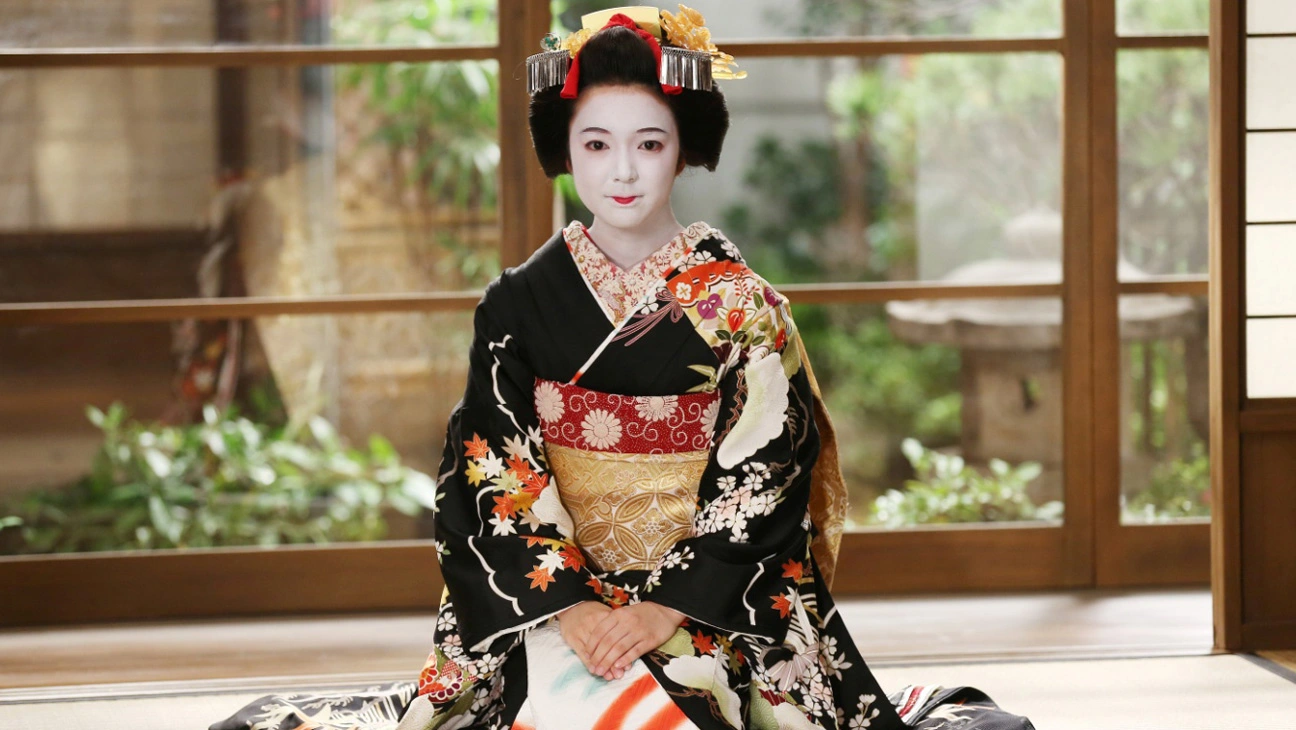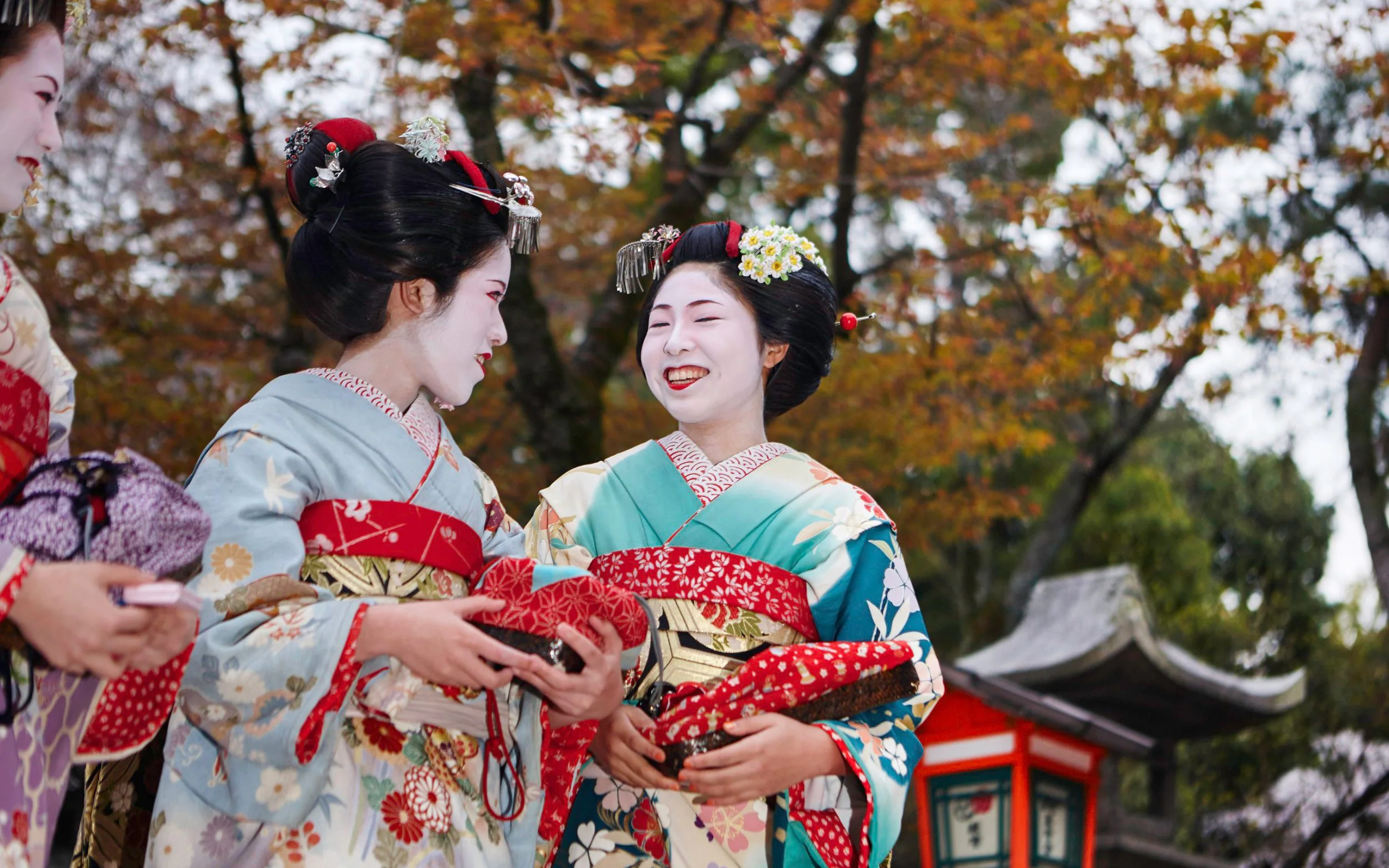Mind, grace, meekness – harmony in silent contemplation … geisha. Truly Japanese embodiment of beauty and grace. Geisha or geisha (芸者) – means “man of art”.
The main task of a geisha is to entertain the guest by singing, dancing, playing musical instruments, pleasant conversation, etc.
The first historical references to geishas, or rather, those who were engaged in entertaining guests at holidays (like a toastmaster, in the role of which a lower-ranking samurai often acted), date back to the 16th century, however, as a professional craft, this occupation was formed by the beginning of the 17th century. in Kyoto (then in Osaka and Tokyo), and the term “geisha” itself appeared during the reign of the Tokugawa clan, closer to the middle of the 17th century.
The first representatives of this profession were male actors from the Kabuki theater (歌舞伎), where initially all the roles were played by women, but since 1629 they were forbidden to perform on stage, young men took their place, and only after the Second World War did a female troupe appear ” Ichikawa Kabukiza.”
Thus, the geisha of that time is a pretty young Kabuki actor whose repertoire is mainly limited to female roles. However, since the moral aspect left much to be desired, from the middle of the 17th century, the cast of the Kabuki theater was formed exclusively from men of mature age, which probably caused the gradual disappearance of male geisha.

The first female geisha was Ogiya Kasen, who lived in the Ogiya house in the pleasure district of Yoshiwara in Kyoto. Kasen’s original occupation is prostitution. However, in 1761, having paid off her debts and gained freedom, she becomes a geisha.
At the same time, the division of geishas into Shiro-geisha and Korobi-geisha takes place.
Previously, there were several varieties of this profession:
Shiro-geisha (白芸者) – “white geisha”, whose duties include only entertaining guests (singing, dancing, talking, etc.).
Korobi-geisha (転び芸者) is a “tipping geisha” who could combine the main duties of a geisha and intimate services.
At the end of the 16th – beginning of the 17th centuries, after the pacification of the warring samurai clans and the unification of the country, Tokugawa Ieyasu (the founder of the Tokugawa shogun dynasty) begins the construction of “gokaido” (五街道 – five main roads), originating in the residence of the shoguns of Edo (now Tokyo) . The most important road was the Tokaido Road (東海道), which connected the two main cities, Kyoto and Edo. Initially, the Tokaido road consisted of 53 stations (the number of stations corresponded to the number of Buddhist saints), where travelers could stay for the night.
Soon, “Chashitsu” (茶室) began to appear at many stations – tea houses where girls from noble families (mainly from the families of samurai who died in inter-clan wars) worked. They were well educated, trained in manners and various arts, which undoubtedly attracted a large number of visitors. It was these girls who later became known as geishas. However, the profession of “Geisha” officially appeared only in 1779, after the creation of a special governing body – “kenban” (見番), which established the rules and regulated the work of geisha, and also carried out their registration.

It is worth noting that the term “geisha” originated in Tokyo, while in Japan in general and in Kyoto in particular, the term “geiko” (芸妓) is more commonly used.
Later, with the aim of professional influx, the so-called geisha schools are formed at tea houses, where mostly pretty girls from 6 to 10 years old, bought from poor peasant families, study.
In such a school (otherwise “okiya” (置屋) – “geisha house”), where both already established geisha and pupils lived, Okaa-san (お母さん) was in charge of everything – the most experienced geisha, under whose leadership future geishas were trained.
The children didn’t need anything.
They had: food, clothes, shelter … however, in addition to studying, their duties included housework (laundry, cleaning, etc.), as well as fulfilling the instructions of the older “sisters”. In the geisha school, previously and still, a strict hierarchy is maintained. All geishas are sisters to each other. More experienced – older sisters, beginners – younger. The guilty were punished severely, and corporal punishment was often used.
Having learned all the intricacies of the profession (in fact, a geisha improves her art all her life), the newly minted geisha had to gradually work out the entire amount that Okaa-san spent on her (her maintenance during the training period and the ransom paid to her parents).
It is noteworthy that if Okaa-san did not have an heiress to whom she could transfer the management of the okiya, she could adopt one of her pupils or geishas, and subsequently transfer her “business” to the latter.
Education at school took place in the strictest discipline.
The main arts that future geisha were trained (and are now studying) are:
- Etiquette;
- The art of having a conversation on various topics;
- Playing three or more traditional Japanese musical instruments (usually: tsuzumi drum, shamisen (similar to a lute),
- hayashi flute and / or shakuhachi);
- Traditional Japanese dances;
- Conducting a tea ceremony;
- Drawing up flower arrangements (ikebana);
- Poetry and singing (nagauta (long traditional Japanese songs) and tanka (short traditional Japanese songs));
- Foreign languages.
